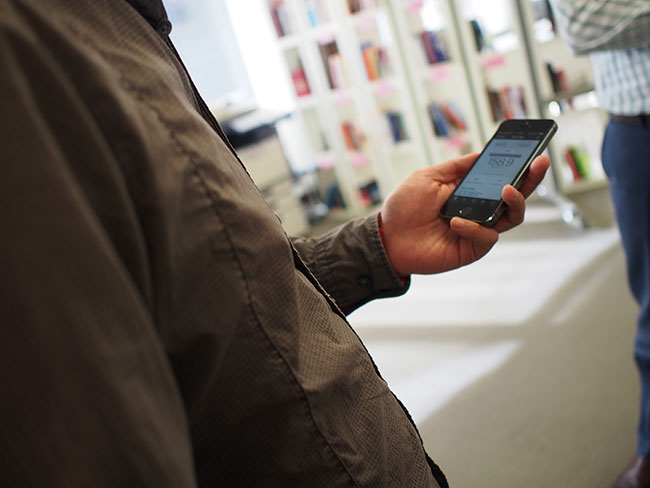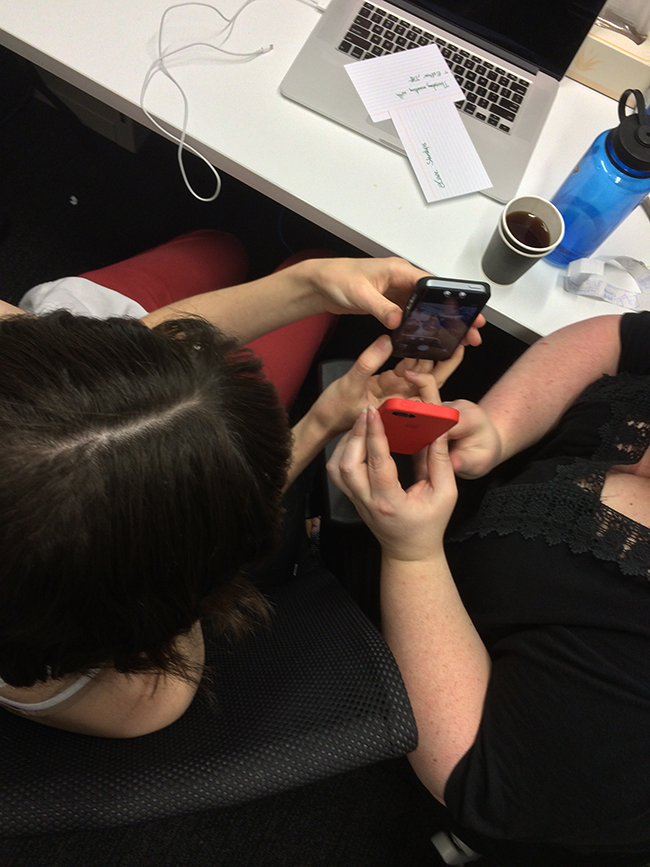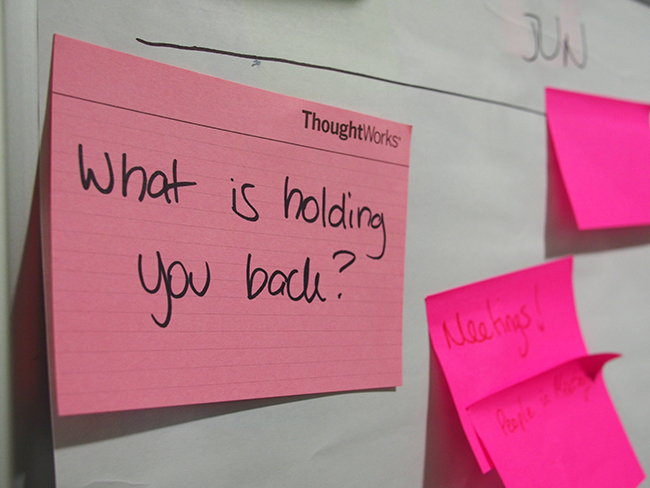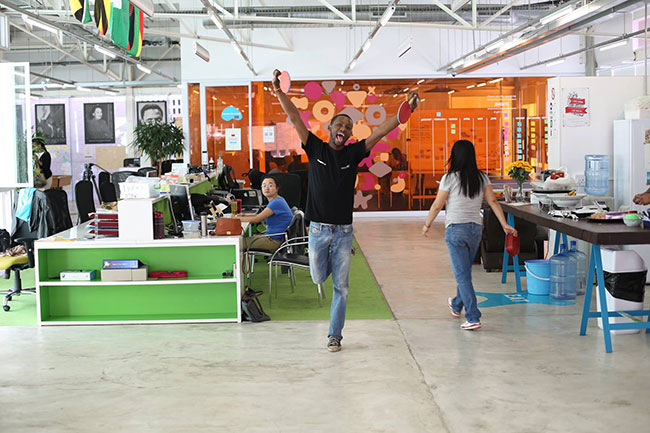
The Digital Mantras
Do you prefer omnichannel or multichannel? Edutainment or interactive media? Native or hybrid? Applepay or CurrentC? E-comm/M-comm/M-POS?
The world is now so heavily populated by digital acronyms, and terms, that unless your day is spent keeping up to speed with the new expressions then it is very easy to be baffled by words and leave you unsure in which direction it would be right for you to drive your business.
When you set out on the journey to design and implement a digital solution many of the above terms can cloud your focus on what the end product might look like. No matter whether you are looking for a solution to fix an in-house issue or an external customer requirement, I have always found it extremely useful to focus your thinking back to the following two simple DIGITAL MANTRAS to give an objectionable view on your product.
- What’s in it for me?
- How does it make my life easier?
What is in it for me?
The modern day world is full of options and alternatives. Whether this is the choice of convenience store to pick up the milk from on the way home or which note taking app you choose to download to replace your pad and pen?
With so much competition it’s simply not good enough anymore to just build it and they will come.

The very obvious and most simplistic design advice is to meet the customer need and you will have succeeded, but then inevitably, many of your competitors will do this also. This is where I believe the selfish gene kicks in and we (as users) get to benefit from the volume of options available on the market. We can compare, trial and assess a multitude of products before inevitably settling on one that provides what you need plus the added bonus of “something for me”.
In customer solutions “something for me” often translates into reward gamification: rewarding loyalty by moving up through benefit tiers, offering freebies via vouchers/discounts, giving a promotional period of premium upgrade access (e.g. Linkedin, Evernote). Whether you choose to reward first download/purchase or reward via repeat engagement, it’s key to make it clear, enticing and obvious to the customer what will be in it for them. It may just be the reason they choose you and not a competitor.
Rewarding usage can also apply to enterprise (in-house) solutions by gamifying engagement with your product. The growth of Social Collaboration platforms within businesses (e.g. Jive, Yammer) has seen viral, and unforced, adoption of a digital solution. Many businesses are reporting a benefit in the reduction of IT help desk calls as users answer IT questions for their fellow colleagues (akin to the Apple Support forums online). I believe that this answers a different side of “what is in it for me?”, letting your staff members help their fellow colleagues and being thanked with virtual ranking points can also tick a box for some users. In this case it’s benefiting personal reputation, being a respected (and high point scoring) collaborator can give a morale boosting kudos for the contributor and drives repeat engagement.
How does it make my life easier?
It is 2014 (for a few more weeks), and our ever connected world allows us to expect to achieve more and more with each passing day. We pay the nursery bill on the train, we order our groceries for delivery whilst we have our morning coffee, and let’s be honest, we have all regularly checked social media and emails before even pulling the covers back on a morning.
Satisfying the customer need must tick the box of “how does it make my life easier?” Users expect their solutions to be slick, sometimes intuitive, a series of simple and self explanatory steps which inevitably saves time against our previous choice of product/process to solve the same task.
Modern day banking has to consider this mantra in all of its new solutions. These days we demand that banking should be easy. We want access to our account balance at the touch of a button (anytime, anywhere), money transfers and payments done instantly and the next biggest demand that we want from our banks is “Straight Through Processing”.
Our busy lives don’t have patience anymore for multi-stage processes, i.e. applying for a mortgage online but still needing to go into the bank to validate the deal and sign the paperwork. Straight through processing is all about completing the end to end task there and then which in many cases leads to securing the customer and their business at the same time.
Technology is opening the door for straight through processing:
- Webcam/facetime chats for visible identification checks
- Optical Character Recognition for instantly extracting the data from a scanned Passport/Driving Licence
- Electronic signature solutions legally binding you to an agreement

It’s now time for the banks to challenge their existing processes and adopt these innovations so it makes it easier for their customers.
Finding the simpler and easier solution to retail shopping is the now the huge opportunity for retailers to take a lead on their competitors. We are all now bought in to online shopping, many of us will have also adopted home grocery delivery or click and collect, but what about allowing digital solutions to enhance your in-store experience?
There are trials happening in many different retailers - handheld scanning devices, ibeacons, augmented reality, to name a few, but in my opinion no one has found the magic solution yet that can tick the box of "how does this make my life easier" as well as being the engaging solution that you turn to repeatedly.
There’s a gap in the market for the combined app that can give the customer many (or as few as they want) digital in-store solutions to solve their customer needs. If this solution could also be the aide for the store manager i.e. MI on shopping behaviour, visitors, favourite purchases, etc then it opens so many opportunities for personalised offers, management promotions and more.
Take a step back
I would encourage you next time you are knee deep in planning, swamped in UI/UX design or at the latter stages of developing your next project - take a step back, put on the customer shoes and apply the Digital Mantras to the product.
Carefully consider whether your offering gives something for the customer, remember that it doesn’t have to be monetary, promotional etc it could simply be a morale boosting feature that makes the user happy.
Look also at your product and assess its use against competitor offerings (including non digital solutions) and make sure that you are either directly improving the users productivity or being the enabler for a productivity saving elsewhere. Make their life easier.

Ticking one of the mantra boxes is great, it could well be the desired product the user was looking for, but does it leave the door open for a competitor to come along with their solution, tick both boxes and maybe steal your lead?
Find that solution that satisfies both and get the door open quickly because the customers are coming.

Disclaimer: The statements and opinions expressed in this article are those of the author(s) and do not necessarily reflect the positions of Thoughtworks.














